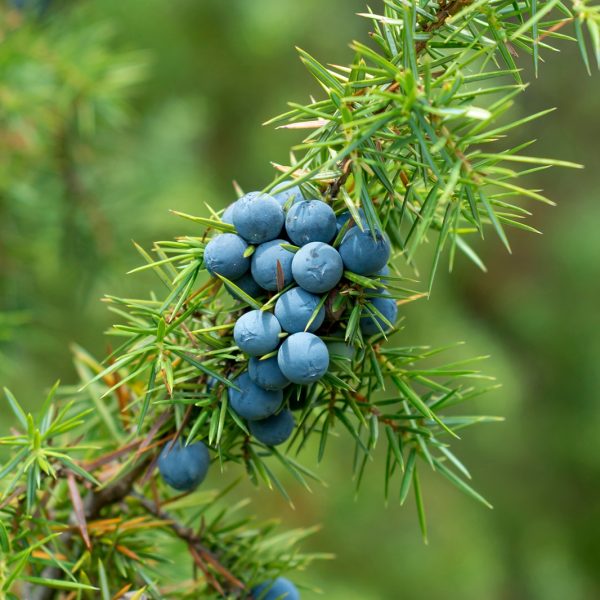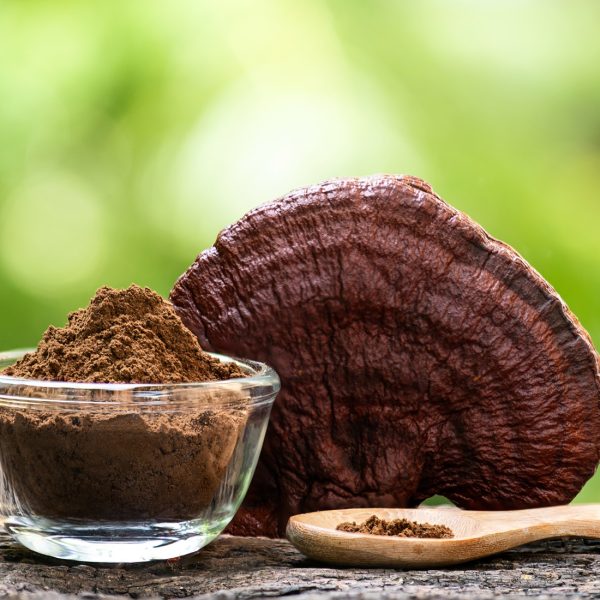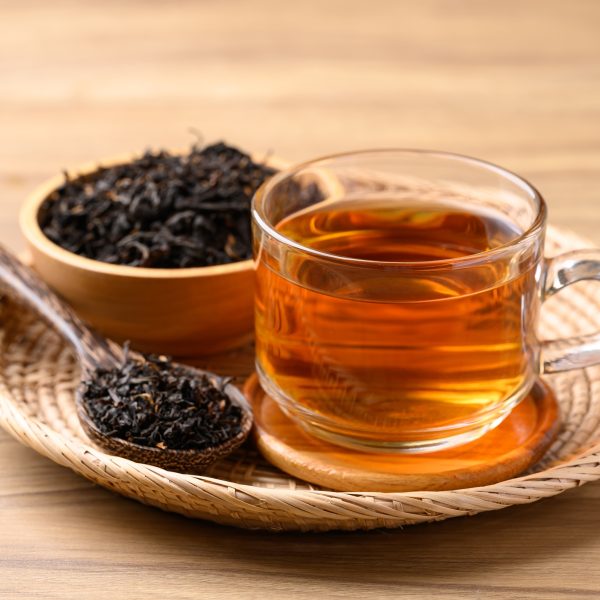
Herbalist Guido Mase explores the gentle but consistent effects bitters have in promoting digestive health and liver function.
Bitters – one of the only preparations, culinary or medicinal, known simply by its flavour profile. They are even used in cocktails. In botanical medicine, we value the gentle but consistent effects bitters have in promoting digestive health and liver function. But a bottle of liquid herbal bitters holds something more: from the weedy roots and exotic spices it may contain, to the flavour itself (both challenging and strangely familiar), bitters bring the flavour of wild, unkept places into our lives. This gift is important, as it is largely absent from our diets today. In that sense, bitters are a distant echo of our foraging ancestors’ experience. Herbalists seek to turn this echo into a daily conversation.
The simple definition of bitters is “remedies that have a bitter taste” (1). In this sense, vegetables like radicchio (a variety of chicory, Cichorium intybus L.) would qualify, as might a strong cup of black coffee. In practice, bitters are often used in the form of a liquid extract, prepared from multiple botanicals including roots and spices. Part of the reason for this is to concentrate the bitter-tasting compounds and deliver an effective dose. Another is the difficulty in consuming a mug full of bitter tea: small amounts of a concentrated liquid are effective, and much more pleasant to take. Compliance is key with any medicine.
Preparation and history

The extracts used in liquid bitters are often in a base of alcohol, though one can find them made with vinegar, or as powders meant to be mixed in a little water. This liquid form allows for the full experience of the bitter flavour on the tongue – an essential part of how bitters work, and why they seem less effective when taken in capsule form (2). But alcohol also makes for an excellent solvent and preservative, drawing out bitter and aromatic components from the herbal ingredients and stabilizing the final solution. Alcohol-based bitters are also a very traditional part of mealtimes. But the bitter liqueurs we see today (like Cynar, Fernet, Underberg, Unicum, and so many more) may not have been the first documented medicinal bitters in the European tradition.
That honour may belong to a blend from a now-lost herbal written and illustrated over 2,000 years ago in northern Turkey by a physician known as Crateuas. He helped to develop the formula as an antidote to poison, and it included over 40 different botanicals (3). The remedy proved popular, and countless variants were passed on through the generations. These became known as “theriac” (the physician Galen coined this name, which roughly means “remedy for the bite of wild beasts”). Though their ingredients evolved over time, they followed a similar template: strong bitter herbs like centaury (Centaurium erythraea Raf.), costus (Saussurea costus (Falc.) Lipsch), and the wild poppy (Papaver rhoeas L.) were blended with pungent, aromatic herbs like ginger, pepper, and asafoetida (Ferula assafoetida L.). Herbal resins and gums came next – both as flavour, and to soften and harmonize the formula. Finally, the herbs were ground into powder and mixed with a little honey as a binder and sweetener (4).
This same template is still followed today: strong bitter herbs, a custom cocktail of aromatic and pungent spices, and finally gummy, starchy, or sugary ingredients to bind the formula together and offer a (relatively) sweet counterpoint. The indications for these formulas are similar to what they were 2,000 years ago: bitters assist and modulate the process of digestion and assimilation and encourage gentle daily detoxification. These are crucial physiologic functions – no wonder the theriac of antiquity was so revered. At the heart of its power is the bitter taste itself. What might be happening when it hits our tongue?
The science behind tasting bitters
Our taste buds contain a few types of specialized receptors, each tuned to a broad flavour category. Receptors for sweetness, saltiness, and delicious “umami” (a savoury quality linked to amino acids found in protein, especially glutamate) give us a sense of pleasure and encourage us to eat more of the simple sugars, important electrolytes, and nourishing protein that elicit these flavour experiences (5). There may be a receptor for fats as well (6), another important source of nutrition. Sour taste receptors have a more neutral role: if coupled with sweetness (think fruit), sourness can be pleasant. In other cases (think spoiled meat, or rancid fat), acidity feels wrong, and leads us to stop eating (7). But bitterness always acts as a deterrent: folks report that they just don’t like the flavour and tend to avoid bitter-tasting foods (8). This is obvious in children, who may have a higher concentration of bitter taste receptors compared to adults (9): even the small amounts of bitter compounds in vegetables like broccoli send them running. But if you look at the modern Western diet, you will find that we’ve systematically removed bitter ingredients from our food supply (10), and even altered our vegetables to contain fewer bitter constituents (compare the wild versions of carrots and lettuce to their domesticated, supermarket varieties) (11). Indeed Western culture seems to have a child-like palate.

The reason we turn away from the bitter flavour is the same reason children are more sensitive to bitterness: toxic, poisonous substances are often very bitter, and the receptors that detect their presence (known as T2R, or “taste type 2 receptors”) are there to protect us (12). This is important at any age, but even more so for the sensitive metabolisms of children. T2Rs on the tongue, like other taste receptors, are linked to the brain’s flavour perception centres via nerve fibres (13). There are more than 25 different types, sensitive to hundreds of different bitter compounds from the natural world (14). This broad spectrum includes simple polyphenols, such as the flavonoids in goldenrod herb (Solidago species); strongly bitter lactones found in roots from dandelion to gentian (Gentiana lutea L.); and alkaloids, from caffeine to atropine, which are rare, intensely bitter, and often deadly. While the protective effect of T2R stimulation makes sense for a poison like atropine (from Atropa belladonna L., the deadly nightshade), you might wonder why we need protection from the non-toxic dandelion root (or broccoli for that matter). In fact, we don’t – but whether goldenrod or dandelion, plants that are not toxic to humans may still be toxic to many insects, and a deterrent to browsing (15). Insects have primitive taste receptors that are thought to be the evolutionary precursors of T2Rs: similar in structure, they activate a primal, aversive response (16). The insect gets the message, and eats less.
This message alters behaviour in mammals, too. An interesting area of clinical research on the bitter taste involves appetite modulation. In an apparent paradox, bitters have been used to stimulate appetite in conditions like anorexia, or when appetite is suppressed during illness or convalescence (17). This gentle effect can help folks maintain or recover a healthy weight and may be related to the increase in digestive juice production and stomach muscle tone that accompanies a dose. But for those whose appetites are normal (or excessive), recent clinical research suggests that experiencing a bitter taste before or during a meal reduces overall consumption of food between 20% and 30% (18). The effect lasts throughout the day and can be valuable for those attempting to control their weight or reduce their intake of carbohydrate-rich foods (19). Bitters may affect our appetite much the same way bitter compounds affect insect browsing.
What effect do bitters have on our digestion?

The protective effect that comes from stimulating T2Rs with bitter compounds starts by slowing down our overall intake of food. But it does not stop there: many of the classic effects we associate with bitters, from improved digestion to enhanced liver function and bile production, are part of an overall protective effect, too. Bitters inspire the production of digestive juices across the entire GI tract (20): as a result, food is bathed in secretions that neutralize bacteria and break down potential toxins with digestive enzymes. Furthermore, bitters may increase the activity of molecular “pumps” in the intestine that keep harmful substances from entering the bloodstream, favouring their expulsion via the colon (21). And finally, by supporting the metabolic function of the liver, bitters help ensure that our bodies break down, neutralize, and eliminate unwanted substances (22). When you put it all together and take a step back, the role of T2Rs becomes apparent: these receptors engage multiple physiologic processes that act in concert to protect us from toxicity, enhance digestion, and keep detoxification and elimination working smoothly (23). They are triggered by the bitter taste.
When you taste something bitter, the T2Rs on your tongue send a signal to your brain, and you perceive the flavour. Perhaps there is a brief shudder, but soon you can feel an increase in saliva – a harbinger of things to come, as digestive juice production increases and your body gets ready for a meal. These are reflex effects: the sensation of bitterness triggers a cascade throughout the gut, mediated by a signal sent via the vagus nerve (a key nerve “superhighway” that regulates the function of our internal organs) (24). But this nerve reflex is just one way bitters activate our digestive and detoxification processes: over the last twenty years, researchers have discovered T2Rs all over the body, not just on the tongue. Stimulating intestinal T2Rs, for example, triggers the release of hormones that make us feel full (this may help explain the clinical research showing we eat less when tasting bitterness before a meal) (25). T2Rs are also found in the airways, both lungs and sinuses, where they open the passages and stimulate the secretion of antibacterial compounds (bacterial waste, it turns out, tastes bitter) (26). Some immune cells may have T2Rs on their surfaces (27). The thyroid gland carries T2Rs (28). Even the heart can “taste” bitterness: cardiac T2Rs may help modulate blood vessel diameter and blood pressure (29). This line of research hints at applications for everything from asthma and sinusitis to high blood pressure. While these effects are not evident when we take liquid bitters by mouth, they still reinforce the understanding that the bitter taste elicits a suite of protective activity from the body.
How herbalists use bitters

In the herbal clinic, we turn to bitters to manage and prevent digestive complaints, particularly for simple issues like gas, bloating, and indigestion. Liquid bitters can be taken in moderate doses to address these concerns and, over time, will help them appear less frequently. They do this by encouraging our own bodies to rise to the occasion: as such, they are a more tonic strategy when compared to digestive enzyme pills, antacids, or laxatives. A few millilitres (about 60-90 drops) is a fine place to start. To address concerns in the lower belly, such as bloating, cramping, or occasional constipation, take bitters before a meal. For indigestion and overfullness, try them after eating. We also recommend a week or two of thrice-daily bitters during the change of seasons, particularly in early spring and fall, when our diets shift and when many folks experience digestive upset. It is important to remember that, however they are used, bitters are not a “herbal detox”: yes, we feel better after taking bitters. But this is because of their protective, enlivening effects and not because they are “cleaning” us: our liver does a great job of that every day. Bitters just help support that work. Finally, folks who have active peptic ulcers, or liver disease (including gallstones), should use bitters with caution and only after consulting a competent herbalist. The stimulating effect bitters have on digestive juice production and bile secretion from the liver could complicate those conditions. And because some of the herbs used in bitters can have strong effects, pregnant people should use extra care and try gentle preparations, like dandelion root tea, first.
In conclusion, bitters are supreme allies for digestion and metabolism. Because these functions are foundational, bitters often improve overall health. They help reduce overconsumption of food: the antidote to “super-size” meals. In fact, digestive complaints, metabolic dysregulation, and difficulty with maintaining healthy weight (all of which are so common in the Western world) may be partly due to the child-like diet so many follow: our digestion is drowned in sweet treacle, missing the crucial signal for effective function that the bitter flavour provides. The promise of bitters is the restoration of the theriac in our lives: the antidote to poison, the flavour of the wild, the crisp, clear signal that allows us to maintain moderation, to nourish ourselves with grace.
References
- Hoffmann, David. Medical Herbalism: The Science and Practice of Herbal Medicine. United States: Inner Traditions/Bear&Co., 2003:498-500
- McMullen MK, Whitehouse JM, Towell A. Bitters: time for a new paradigm. Evidence-Based Complementary and Alternative Medicine. 2015;670504.
- Norton S. The Pharmacology of Mithridatum: a 2000-year-old Remedy. Molecular interventions. 2006;6(2):60.
- Karaberopoulos D, Karamanou M, Androutsos G. The theriac in antiquity. The Lancet. 2012;379(9830):1942-3.
- Breslin PA, Huang L. Human taste: peripheral anatomy, taste transduction, and coding. Advances in oto-rhino-laryngology. 2006;63:152-90.
- Liu D, Costanzo A, Evans MD, Archer NS, Nowson C, Duesing K, Keast R. Expression of the candidate fat taste receptors in human fungiform papillae and the association with fat taste function. British journal of nutrition. 2018;120(1):64-73.
- Breslin PA, Huang L. Human taste: peripheral anatomy, taste transduction, and coding. Advances in oto-rhino-laryngology. 2006;63:152-90.
- Drewnowski A. Taste preferences and food intake. Annual review of nutrition. 1997 Jul;17(1):237-53.
- Correa M, Hutchinson I, Laing DG, Jinks AL. Changes in fungiform papillae density during development in humans. Chem Senses. 2013;38:519–27.
- Roy GM. The applications and future implications of bitterness reduction and inhibition in food products. Critical Reviews in Food Science & Nutrition. 1990;29(2):59-71.
- Fenwick GR, Curl CL, Griffiths NM, Heaney RK, Price KR. Bitter principles in food plants. In: Rouseff RL,ed. Bitterness in foods and beverages; developments in food science. 1990;25:205-50.
- Glendinning JI. Is the bitter rejection response always adaptive?. Physiology & behavior. 1994;56(6):1217-27.
- Schoenfeld MA, Neuer G, Tempelmann C, Schüssler K, Noesselt T, Hopf JM, Heinze HJ. Functional magnetic resonance tomography correlates of taste perception in the human primary taste cortex. Neuroscience. 2004;127(2):347-53.
- Meyerhof W, Batram C, Kuhn C, Brockhoff A, Chudoba E, Bufe B, Appendino G, Behrens M. The molecular receptive ranges of human TAS2R bitter taste receptors. Chemical senses. 2010;35(2):157-70.
- Napal GN, Palacios SM. Bioinsecticidal effect of the flavonoids pinocembrin and quercetin against Spodoptera frugiperda. Journal of pest science. 2015;88(3):629-35.
- Weiss LA, Dahanukar A, Kwon JY, Banerjee D, Carlson JR. The molecular and cellular basis of bitter taste in Drosophila. Neuron. 2011;69(2):258-72.
- See, for example, the monograph on gentian root in: Blumenthal M, Goldberg A, Brinckmann J. Herbal medicine. Expanded commission E monographs. Integrative Medicine Communications; 2000.
- Andreozzi P, Sarnelli G, Pesce M, Zito FP, D’Alessandro A, Verlezza V, Palumbo I, Turco F, Esposito K, Cuomo R. The bitter taste receptor agonist quinine reduces calorie intake and increases the postprandial release of cholecystokinin in healthy subjects. Journal of neurogastroenterology and motility. 2015;21(4):511.
Kim HM. Modulation of the Bitter Taste to Reduce Calorie Intake. Journal of neurogastroenterology and motility. 2015;21(4):457-8. - Mennella I, Fogliano V, Ferracane R, Arlorio M, Pattarino F, Vitaglione P. Microencapsulated bitter compounds (from Gentiana lutea) reduce daily energy intakes in humans. British Journal of Nutrition. 2016;116(10):1841-50.
- Bone K, Simon Mills MC, Fnimh MA. Principles and practice of phytotherapy: modern herbal medicine. Elsevier Health Sciences; 2012:40
- Jeon TI, Seo YK, Osborne TF. Gut bitter taste receptor signalling induces ABCB1 through a mechanism involving CCK. Biochemical Journal. 2011;438(1):33-7.
- Raka F, Farr S, Kelly J, Stoianov A, Adeli K. Metabolic control via nutrient-sensing mechanisms: role of taste receptors and the gut-brain neuroendocrine axis. American Journal of Physiology-Endocrinology and Metabolism. 2019 Oct 1;317(4):E559-72.
- Harmon CP, Deng D, Breslin PA. Bitter taste receptors (T2Rs) are sentinels that coordinate metabolic and immunological defense responses. Current Opinion in Physiology. 2021; 20:70-6.
- Darby SA. Neuroanatomy of the autonomic nervous system. Clinical Anatomy of the Spine. Spinal Cord, and ANS. 2017:466-469.
- Sternini C, Anselmi L, Rozengurt E. Enteroendocrine cells: a site of ‘taste’ in gastrointestinal chemosensing. Current opinion in endocrinology, diabetes, and obesity. 2008;15(1):73.
- Maina IW, Workman AD, Cohen NA. The role of bitter and sweet taste receptors in upper airway innate immunity: recent advances and future directions. World journal of otorhinolaryngology-head and neck surgery. 2018;4(3):200-8.
Deshpande DA, Liggett SB. Regulation of Intracellular Calcium by Bitter Taste Receptors on Airway Smooth Muscle. Calcium Signaling In Airway Smooth Muscle Cells 2014;409-421.
Devillier P, Naline E, Grassin-Delyle S. The pharmacology of bitter taste receptors and their role in human airways. Pharmacology & therapeutics. 2015 Nov 1;155:11-21. - Gopallawa I, Freund JR, Lee RJ. Bitter taste receptors stimulate phagocytosis in human macrophages through calcium, nitric oxide, and cyclic-GMP signaling. Cellular and Molecular Life Sciences. 2021;78(1):271-86.
- Clark AA, Dotson CD, Elson AE, Voigt A, Boehm U, Meyerhof W, Steinle NI, Munger SD. TAS2R bitter taste receptors regulate thyroid function. The FASEB Journal. 2015;29(1):164-72.
- Bloxham CJ, Foster SR, Thomas WG. A bitter taste in your heart. Frontiers in Physiology. 2020;11:431.
































